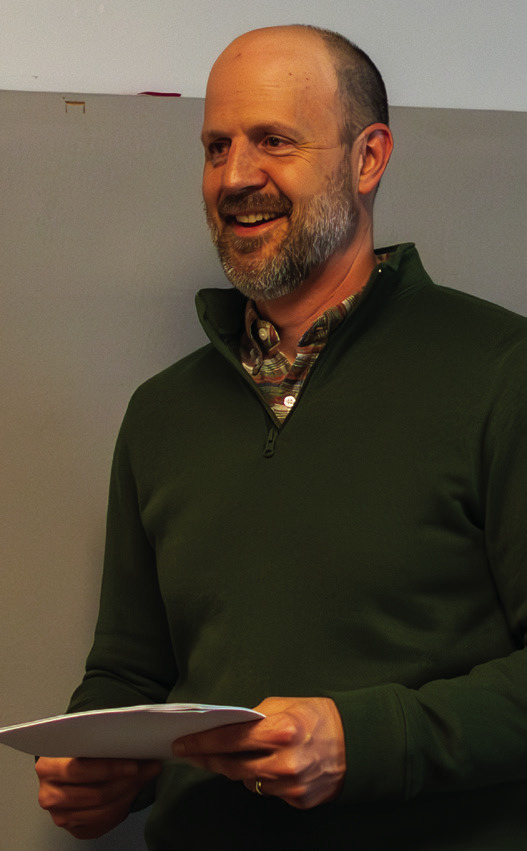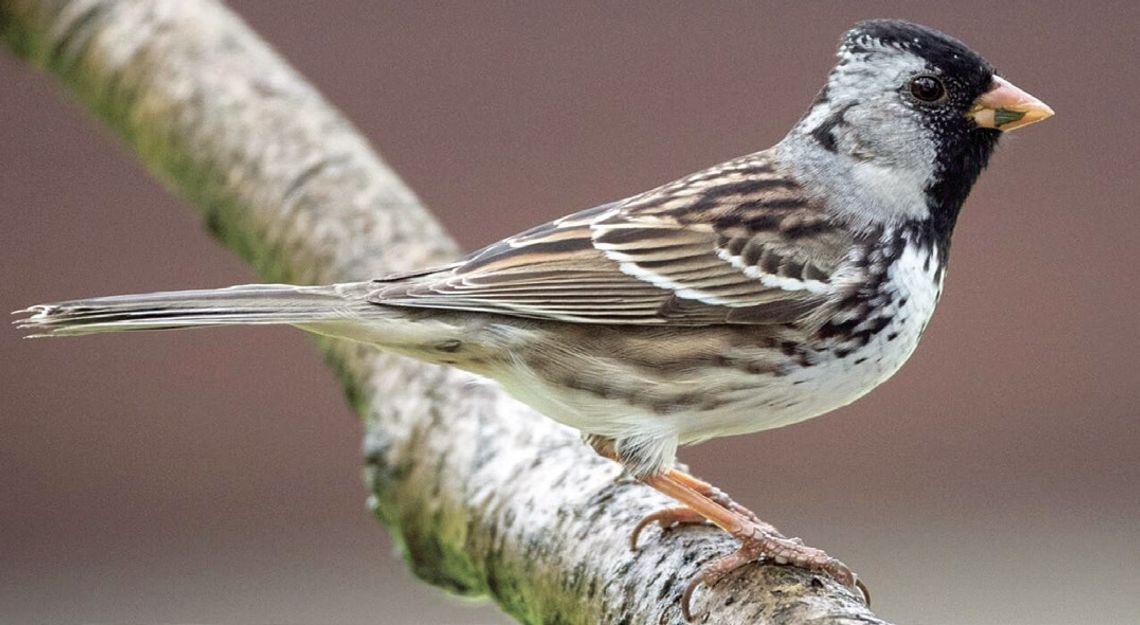Pittsburg State University associate professor of biology Andrew George and PSU senior Heather Burrow spoke about their work Tuesday night with members of the Southeast Kansas Audubon Society.
The public meeting took place in the Parsons Arboretum.
The main purpose of the presentation was the Harris’s sparrow, a bird that’s seen in Southeast Kansas now.
“This is really a special bird right in the Great Plains,” George said, saying that people travel from the coasts to see the birds.
A Harris’s sparrow is a large sparrow.
“They’re big. It’s our biggest sparrow. And you don’t appreciate that until you catch them. And they’re a handful,” George said.
A study is underway for the sparrow to look at its long flight from its breeding grounds in north central Canada to its second home in the southern Great Plains. Many of these sparrows can be seen in Southeast Kansas now, and their numbers are being studied in Montgomery County now.
The sparrow’s number has been declining in recent decades, like many grassland birds, according to data from the Christmas bird counts.
He said Motus towers, which are located in a number of Kansas counties and in other areas of the United States, help track birds that have been tagged with sensors that broadcast basic information when the birds fly within 10 miles of the Motus towers.
He hopes the study can provide a clearer picture of the sparrow’s numbers and its life travels. Researchers also capture the birds to learn about their biology and what they are doing. Captured birds are studied, banded and tagged during this research and then released.
George said he hopes the Motus network will help show how the birds get from Canada to the Southern Great Plains. He said he thinks the birds return to the same place every winter and he hopes the study will provide more detail about this. Without banding and capturing the birds, it’s hard to know this information.
“We want to understand how they’re moving, how they use the landscape, in part, so that we can maybe prioritize areas that they need,” George said.
He said there are a lot of Harris’s sparrows on Dr. Phillip Eastep’s property near Cherryvale, where a Motus tower was installed in recent years. He said he and others caught six Harris’s sparrows there but only tagged five of them because one got away. George hopes to capture and tag more birds in the spring and fall.
George said the tags are solar powered and their batteries should last years.
He said there are Motus towers in north central Canada, but the towers aren’t connected to a cell network as they are in many places in the U.S. So the captured information on tagged bird travels needs to be manually retrieved. The breeding grounds are remote and diffi cult to get to as well.
“We’re really just getting started with it,” he said of the Harris’s sparrow study.
Burrow spoke about studies she’s helped with of birds in the mined land areas of Southeast Kansas. Biology students help research various aspects of the birds that are captured in nets or other ways, including body fat and molting patterns. The research is trying to find out how the birds are using the mined land habitat for food and cover.
She said the results are still being worked on.
George also gave an update on the birds that fly by the Motus tower on Eastep’s property, called Emerald City. He said his tower is one of the best in the state.
“There’s a lot of birds moving through here. And as I was looking at the map, I just wanted to highlight a few of them that were kind of outliers,” he said.
He’s found white throated sparrows that were tagged in British Columbia.
“So one thing that we’re learning with Motus is that a lot of birds don’t follow our traditional concepts that we have of flyways.” He said instead of flying in direct lines from wintering sites to warmer weather sites, a lot of birds, especially those from the west, are traveling east, then south, which means a lot of them turn up in Kansas and Missouri.
As of January, the tower has had at least 262 detections. More than 27 species of birds have been detected based on their tags.
In other business, the Audubon membership talked about birds seen in recent weeks, including several bald eagles. One member, Mel Hass, told about a cougar and a black bear spotted while hunting north of Bartlett in December.





